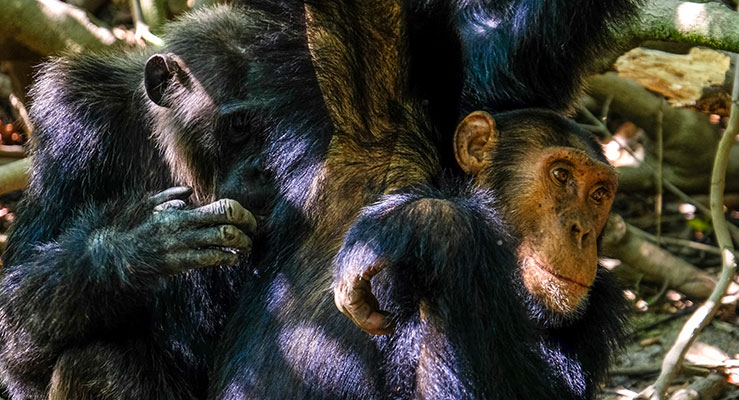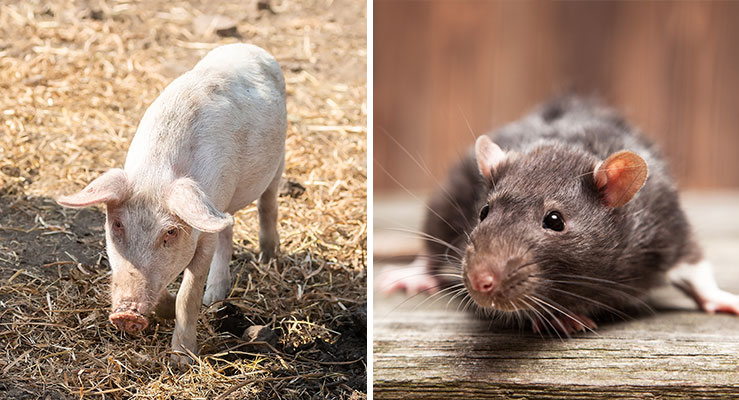Animals' diet is varied, and just like humans, some species eat both plants and other animals. Read more for a list of animals that fall into this category.
On Earth, we coexist with many different species of animals. Hence, the diet of each also varies.
Although there are multiple different classifications for animals based on their feeding habits, according to the food type, science usually categorizes animals in three main segments:
- Carnivores
- Herbivores
- Omnivores
A carnivore, meaning "meat-eater," is an animal whose diet consists entirely of meat. Occasionally, some carnivores may ingest tiny amounts of plant matter to self-induce vomiting, but that doesn't make them omnivores, as their digestive system lacks the proper enzymes to digest plant-based food.
A herbivore is an animal that only eats plants or algae. Therefore, their digestive system is adapted to only digest plant-based foods.
An omnivore is an animal that can eat and survive on both animal matter and plants. Omnivores often can incorporate food sources such as fungi or algae into their diet.
Further, we will list several animals that eat both plants and animals.
1. Pigs

Wild and domesticated pigs are omnivores. They can survive on a diet consisting of both plants and meat.
In the wild, pigs' diets can include anything like plant parts, mushrooms, fish, eggs, insects, and even small animals like rats, mice, or birds.
2. Rats & Mice

Both rats and mice are omnivores and will consume about any type of food they find.
In the wild, they often eat grains, fruits, vegetables, various seeds, nuts, but also food scraps, insects, snails, dead animals, and countless more. They are not picky at all when it comes to food.
When they are out of food, rats will even eat one another in order to survive.
3. Dogs

Dogs are generally considered omnivores, but there has always been a never-ending debate as to whether they are more carnivorous or omnivorous at their origins. [1]
We already know that our four-legged friends have the ability to take the necessary nutrients from both meat products and those that originate from certain plants.
Therefore, whether they were omnivores from the start or have evolved in time, we decided to include dogs in the list of omnivorous animals based on their dietary potential.
4. Bears

We all know bears for their ability to hunt and kill their prey. However, their diet does not include only meat.
Besides flesh and fish, many bear species will eat a variety of other things like grass, plant roots, grains, different berries, bird eggs, larvae, and insects.
They are also attracted by the humans' garbage and will eat roughly anything that smells good to them, including food scraps, pet food, or other human-associated foods. [2]
5. Chickens

You may find it surprising, but not only mammals can be omnivorous. There are also bird species that eat both plant-based products and meat. In this category, we also find chickens.
In addition to cereals and grass, chickens also eat meat.
Even if they don't seem to be made to hunt, chickens in the wild will often scratch the soil's surface in the hunt for insects, and even animals like lizards, baby snakes, or young mice. [3]
6. Chimpanzees

We all know that there are many similarities between humans and chimpanzees. Hence, we probably should not be surprised that they are omnivores as well.
Wild chimpanzees have a varied diet. They eat all sorts of plant parts and also animal-based food. Their usual menu includes fruits, leaves, nuts, different plants parts, flowers, insects, mushrooms, meat, and more. [4]
7. Foxes

Foxes' diet is mainly carnivorous, consisting mainly of small mammals and birds. However, they occasionally eat fruits and berries and have digestive systems that can process this food type. Consequently, foxes are largely considered omnivores.
They are also scavengers and foragers and their menu may change based on what is freely available and easy to obtain. Anything like food scraps from the household, fruits, and vegetables may feel like a call to a free meal for a fox.
8. Raccoons

Raccoons eat both plants and animals, which make them omnivores.
A raccoon's diet includes many varieties of fruits, grains, nuts, and various parts of plants. However, raccoons also consume animal products such as fish, snails, frogs, crayfish, mice, ground-nesting bird eggs, poultry, and even other small mammals such as rabbits or muskrats. [5]
9. Ostrich

Although much of their diet is based on plants, ostriches also eat animal products.
The ostrich diet consists mostly of grass, fruits, vegetables, seeds, plant roots, flowers, and nuts. However, ostriches also eat insects or small animals such as mice, lizards, snakes, frogs, rats, etc. [6]
10. Squirrels

Most people think that squirrels are herbivores. However, these cute mammals do not eat only nuts and fruits as many believe.
Squirrels' diet consists mainly of plants parts, but they also eat meat. Their menu usually consists of nuts, seeds, fruits, fungi, flowers, plants bulbs, and cereal. However, squirrels do not say no to bird eggs, small insects, caterpillars, lizards, and even young snakes. [7]
Final Word
There are many animals that eat both plants and animals. In this article, we have mentioned only a few of the most common.
Some omnivores will hunt their food, just like carnivores, while others are just scavengers and will be content with the remains they find from humans or other animals.
We hope you now have a better idea about the different types of animals and their eating habits.

